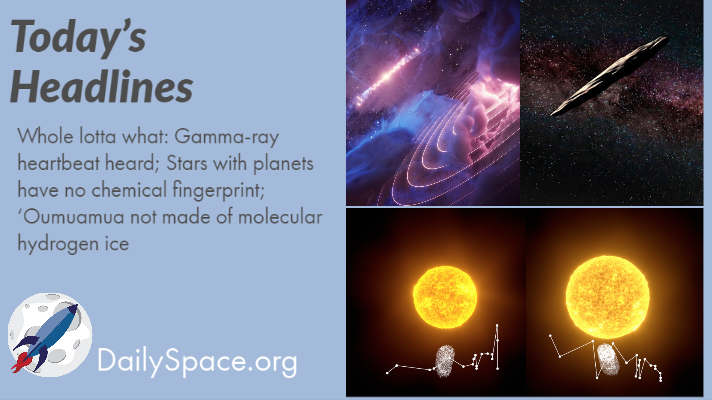
Aug 18, 2020 | Asteroids, Daily Space, Exoplanets, Quasar
Join us today for a lot of unsatisfying news. First, two objects appear to be pulsing in gamma-rays at the same pace, but they’re 100 light years apart. Next, it turns out that stars with planets look chemically like any other star. And finally, our interstellar visitor, ‘Oumuamua, is NOT made of molecular hydrogen ice.
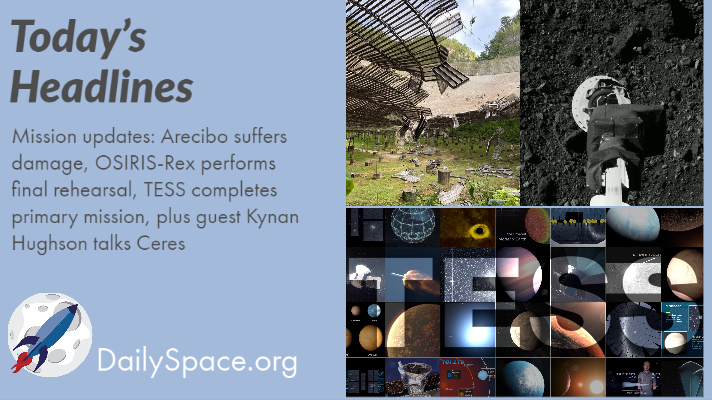
Aug 13, 2020 | Asteroids, Bennu Mapper, Daily Space, Exoplanets, Guest Interview, Observatories, OSIRIS-REx, Our Solar System, Planets
Join us today as we share some mission updates, good and bad. The bad: Arecibo Observatory suffered damage from a snapped cable. The good: OSIRIS-Rex performed a final dress rehearsal for taking a sample of Bennu and NASA’s TESS finished its primary mission. Plus, we’re joined by postdoc Kynan Hughson to talk about this week’s Ceres news!
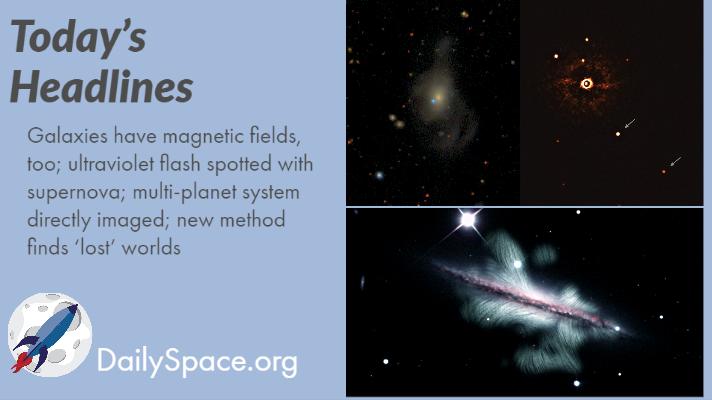
Jul 23, 2020 | Daily Space, Exoplanets, Galaxies, Supernovae, Very Large Array, White Dwarfs
Join us today as we learn that galaxies have magnetic fields, too. Also, scientists are excited to catch the ultraviolet flash of a type Ia supernova and directly image a multi-planet extrasolar system. Finally, researchers have developed a new method for finding “lost” worlds in NASA TESS data (but no dinosaurs, thankfully).

Jul 21, 2020 | Comets, Daily Space, Exoplanets, Venus
Join us today for exciting news that Venus still has active volcanoes! Also, mini-Neptune/super-Earth exoplanets are possibly irradiated ocean worlds, minus Kevin Costner. And we’ll talk about how to observe comet NEOWISE over the next few days as it climbs higher in the northern hemisphere’s night sky.
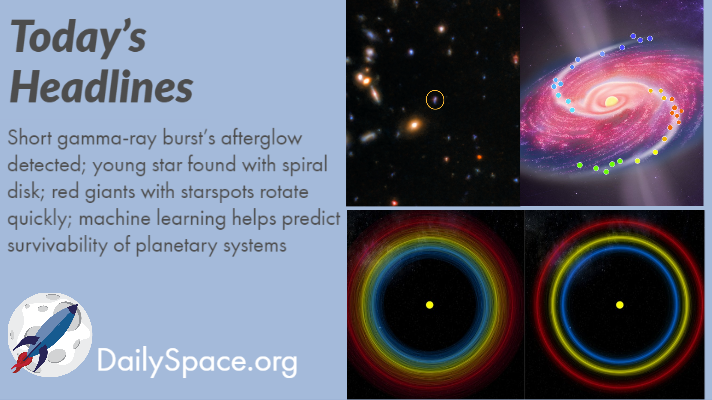
Jul 14, 2020 | Cosmology, Daily Space, Exoplanets, Gemini North, Stars
First, we look at how researchers detected the afterglow of a short gamma ray burst a mere 3.8 billion years after the Big Bang. Then we examine the discoveries of a spiral structure in the disk of a young, heavy star and how red giant stars with large starspots spin faster than those without. And finally, we see how machine learning can be used to predict what planetary systems are most likely to survive.
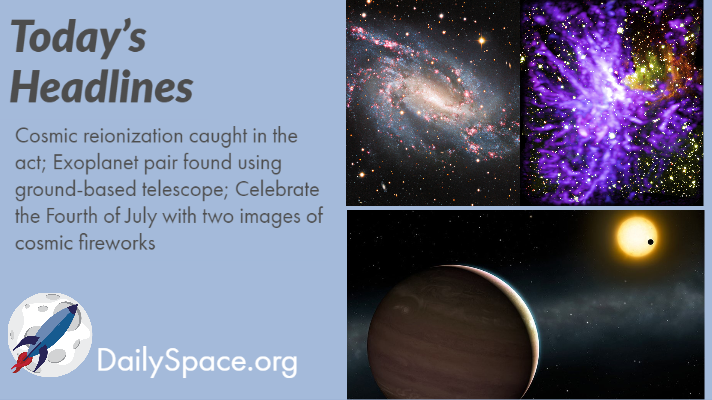
Jul 3, 2020 | Cosmology, Daily Space, Exoplanets, Observatories, Star Forming Region, Uncategorized
Join us today as we talk some more about cosmic reionization and the mounting evidence it occurred very early in the Universe. We also look at two exoplanets, found using a ground-based telescope, that are gravitationally interacting. And we celebrate the Fourth of July here in the United States with some newly released images of cosmic fireworks.








 We record most shows live, on Twitch. Follow us today to get alerts when we go live.
We record most shows live, on Twitch. Follow us today to get alerts when we go live.